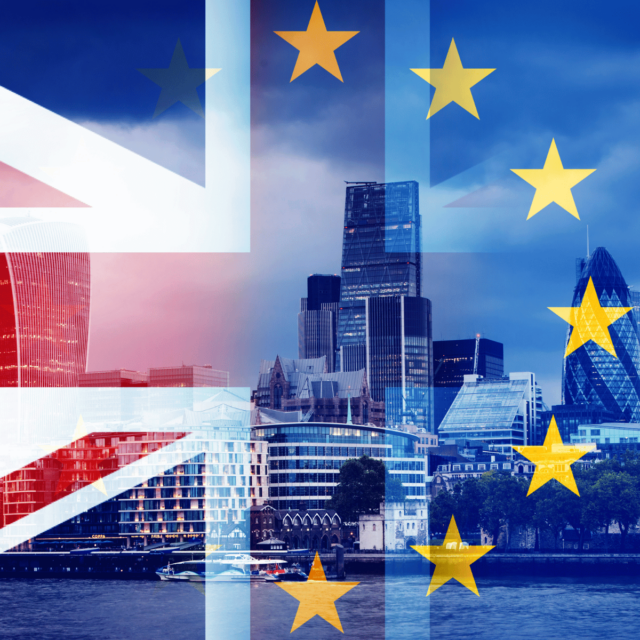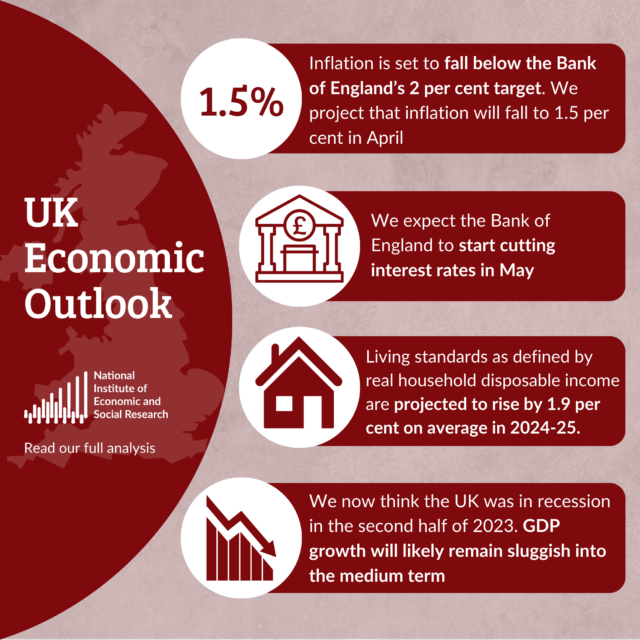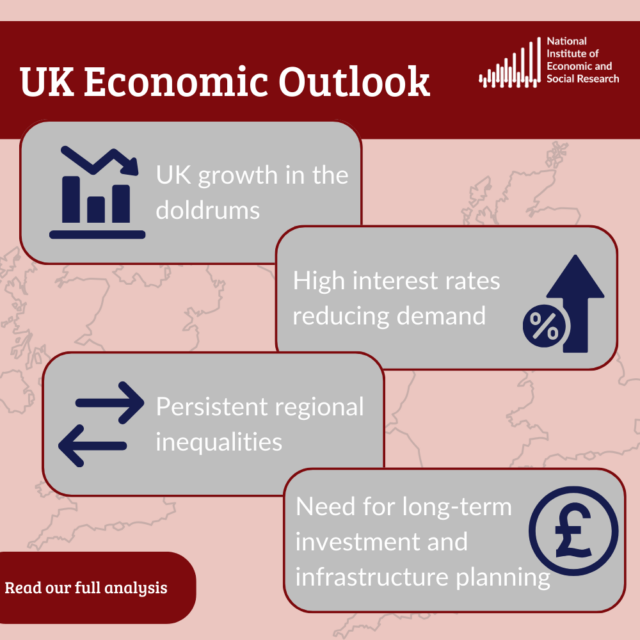How did we get here?
A short and unreliable account of immigration to the UK[1]
A short and unreliable account of immigration to the UK[1]
[Important note and caveat. I wrote this short paper in 2000, as an internal background note to the PIU/Home Office research project “Migration: An Economic and Social Analysis“. It was intended as a sometimes tongue-in-cheek look at the history of immigration to the UK; it was not intended to be remotely comprehensive or definitive, and because it was an internal document, not for publication, it was never tidied up; some of the references are sketchy or incomplete, for example. Nevertheless, I thought some readers might find it of interest, particularly since some of the key themes are very much still topic. As the title indicates, it should be taken with a pinch of salt – and do please read the footnotes! ]
A. Immigration to the British Isles before World War II
Background
Discussion of immigration in this country sometimes appears to assume that it is possible to choose a date at which the British Isles were populated only by “indigenous” inhabitants, and to describe everybody who arrived after that date – or their descendants – as non-indigenous. For example, the leader of Kent County Council recently asserted that Kent had “no prior history of multicultural diversity”.[2]
This is of course false. Ever since the British Isles broke off from the mainland of the European continent in approximately 7000 BC, there have been continuous movements of people in and out of these islands. While those associated with conflict are best known – the Roman invasion and the raids of the Danes – there was also of course much in the way of trade and commerce. Even before the Roman invasion, there were well established trade routes linking the British Isles with the Mediterranean. The Celts – who arrived in the first millenium BC – are believed to have originated on the Russian steppes, and so the language(s) spoken here have long been part of the Indo-European family, derived from Sanskrit and which includes Hindu and Punjabi as well as French and Greek.
After the fall of the Roman Empire (the Romans left Britain in the 5th century) there were numerous invasions and armed incursions, first from what is now German and the Netherlands (the Angles and the Saxons, and others) and later from Scandinavia. King Canute, or Cnut, was a Dane. So by the time of the Norman invasion in 1066, the population of the British Isles was a mix of Britons, Angles, Saxons, Celts, Danes, and so on; in no particular order and with a great deal of intermixture. The Normans, while intermarrying freely, brought with them perhaps for the first time a distinctive racial/linguistic (as opposed to tribal) identity that took a considerable amount of time to assimilate.[3]
The Normans and the Jews
The Norman Conquest is an appropriate point at which to commence a discussion of British migration policy (as opposed to migration per se) since William also invited and encouraged the immigration to England of a substantial number of Jews. This arguably represents the first immigration policy decision taken by an English ruler. The reason was of course economic; unlike Christians, Jews were not debarred from usury (moneylending) and were thus able to provide important financial services to the King and ruling elite.
As elsewhere in Christendom, where there were Jews there was also anti-semitism, arising for both economic and religious reasons. Creditors are rarely loved; and there were the usual legends of ritual murder[4], which in turn provided a convenient excuse for riots or pogroms that could be used to violently write off debts.[5] There were a number of massacres, notably a riot at the coronation of Richard I in 1189. In 1275 Edward I decreed that Jews should wear a yellow piece of cloth as identification, an innovation subsequently imitated elsewhere. Like Hitler, Edward did not stop there, and the Jews were violently expelled and their property confiscated in 1290. At this time, there were probably about 15,000; not an enormous number, but not insignificant in the context of a total population of not more than 2 million. The natives still not being up to the job, their role in the financial system was largely taken by Italians from Lombardy.
The Protestant diaspora
There were continued influxes of continental Europeans, especially Italians, Flemings (often weavers) and Dutch, through the 14th and 15th centuries. The state not only welcomed but encouraged this; Edward III offered immigrant cloth workers protection and tax incentives. But it was the 16th and 17th centuries that saw a new wave of mass immigration, largely the result of religious persecution of Protestants on the Continent.[6] This coincided with – and arguably had much to do with – England’s new-found assertiveness as a maritime power and trading nation under Elizabeth. As now, increasing economic interconnectedness coincided with the violent and bloody manifestation of ethno-politico-religious tensions:
“In retrospect the new age often looks like the beginnings of maritime and economic expansion; but to contemporaries it was more often a renewal of secular and ecclesiastical repression”[7]
The majority of the newcomers were from the Low Countries (now under the Spanish Crown and hence the Inquisition) and France. Often they too were weavers, and they contributed much to the development of a thriving textile industry, especially in East Anglia. In the last few decades of the 16th century, the number arriving amounted to at least 25-30,000. By the 1580s, perhaps a third of the population of Norwich was Flemish, Dutch or Walloon. Indeed, the Dutch made a lasting contribution to the landscape of East Anglia – literally – when Dutch workers, under the direction of the great engineer Cornelius Vermuyden, drained the Fens, creating the productive arable land that exists there now.
This immigration was by no means a laissez-faire procedure, with refugees simply arriving and settling. There were reception centres, where immigrants were screened, and then allotted to various areas for settlement; in addition, the occupations in which they could engage were regulated. However, this reflected not a view that the immigrants were generally undesirable, but security concerns on the one hand, and the need to take maximum advantage of this economic opportunity on the other. Locally, the immigrants were generally welcomed: the Bailiffs of Colchester petitioned the Privy Council for immigrants, and were content with the results, noting “how beneficial the strangers of the Dutch congregation have been and are unto our said Towne.”
A further, and even larger – at least 50,000 – wave of Protestants followed in 1685 with the Revocation of the Edict of Nantes by Louis XIV of France. The Huguenots, as they were known, were more dispersed than earlier Protestant refugees, with many going not only to London but as far as Scotland and Ireland. Like their predecessors, they made important contributions to the textile industry; they also sparked the development of new manufacturing industries like papermaking. More or less contemporaneously, the arrival of William of Orange in 1688 not surprisingly strengthened the already close links, and increased the human interchange, between England and Holland. Meanwhile, the Jews had been allowed – by Cromwell – to reestablish themselves, and they quickly resumed their position of dominance in finance. Cromwell’s conquest of Ireland also facilitated economic interchange between the two islands, and there was significant Irish immigration in the 18th century.
An age of (relative) tolerance….
The next two hundred years did not see influxes on such a scale, although it was in the 18th and 19th centuries that Britain acquired its reputation as a tolerant place for those whose political views made them unwelcome at home. Many French and other Continental emigres arrived in the Revolutionary and Napoleonic periods, although many subsequently returned. During the 19th century, the long list of significant political figures who took refuge in Britain from repressive continental regimes includes of course Garibaldi, Mazzini, Napoleon III, Victor Hugo and Marx, among many others.
Throughout this period there remained no formal controls on immigration. Indeed, by contrast, there were significant controls on the emigration of artisans (the Prohibitory Acts) which were not fully repealed until the middle of the 19th century. This asymmetry reflected the then prevailing economic view of migration. It was generally recognised that Britain and British industry had benefited substantially from the knowledge and human capital brought by the successive waves of immigration described overhead; and a corresponding view that the country would suffer if skilled craftsmen were allowed to take such human capital abroad.
The assimilation of all these groups was not without problems, but no major social dislocation appeared to result from these population movements. The best known popular disturbances of the 18th century – the Gordon Riots – were more anti-Catholic (and anti-government) than anti-Irish. And while the Jews did not assimilate as quickly as other groups, anti-semitism and institutionalised discrimination was – in contrast to the previous unhappy episode – rather more muted than in most other countries in Europe.
One group, while small, is notable since it was the first to result directly from Britain’s maritime predominance, trading prowess, and the beginnings of Empire (which were of course to play such a large role in 20th century immigration to Britain). British ships dominated the slave trade, and by the end of the 18th century there may have been as many as 20,000 black people in Britain, most originally slaves. They made an important contribution to London’s vibrant cultural life, as well as establishing small but significant communities in Liverpool and Bristol. Perhaps surprisingly, they intermarried extensively, and by the time of the 20th century influx of black immigrants they had largely been assimilated.[8]
The Great Migration, 1870-1913
The second half of the 19th century – and especially the last 25 years – was probably the greatest episode of mass migration the world had ever seen.[9] Relatively free trade, unrestricted capital movements, and sharp falls in transport costs – globalisation, in other words – led, just as economic theory would predict, to huge movements of the factors of production from countries where they were abundant and returns were low to countries where the opposite was the case. For Britain, as for most European countries which were labour-rich and natural resource-poor relative to the New World, this meant primarily emigration (especially, of course, from Ireland). Between 1870 and 1913 the British Isles saw net emigration of 5.6 million people, reducing the population by 16 percent relative to the trend.
But in addition to this economic migration from Europe, there was also a wave of Jewish emigration to the west from Eastern Europe, driven by political persecution rather than (primarily) economics. While the majority of the Jews also crossed the Atlantic, several hundreds of thousands came to the UK, with London’s Jewish population tripling to more than 150,000. Unlike previous episodes of mass migration to the UK, the Jews were very obviously different in race and religion to the natives. So indeed were the other groups (for example, Chinese) who began to arrive at this time (albeit in relatively small numbers) as the consequence, one way or the other, of Britain’s central economic and political role in the global economy.
The economic environment too was very different; the last two decades of the 19th century saw the Great Depression[10], near universal male suffrage[11], the growth of urban slums, and the continued rise of the trade union movement. In contrast to previous arrivals, it was not obvious – at least at the time – that the human capital of this wave would make a net contribution to the UK economy; instead there were fears that they would drive down wages and worsen social conditions in the cities. After all, most were uneducated peasants from the most backward part of Europe, speaking little or no English.
Between the wars
It was as a reaction to these fears that the first systematic legislative control on immigration in the UK was enacted. For some Conservative MPs (especially in the East End), the influx of Jews and other Eastern Europeans was a convenient “wedge issue” which could be used to discredit the Liberals (whose advocacy of free trade extended at least in part to immigration) with the newly enfranchised working class. They succeeded in establishing a Royal Commission, which called for restrictions. The Alien Immigration Act of 1905, a direct response to Jewish immigration, gave the Home Secretary the power to refuse entry to those who could not support themselves; further legislation followed in 1914, 1919 and 1920. Meanwhile, the First World War then brought the first great era of globalisation, and of mass migration, to an end.
In the 1920s and 1930s, like most other Western countries (and the United States), the UK restricted immigration of Jews and of non-whites, like Chinese. This was explicitly on racial grounds; in particular, it was thought that a further substantial influx of Jews would increase anti-semitism (this was of course very much the same thinking that drove policy towards non-white immigration after the war).[12] After Hitler took power in 1933, the policy was liberalised somewhat, and many more Jews did arrive one way or another as refugees; but there was no generalised right to admission. Many Jews were denied entry; most of these subsequently perished in the concentration camps.
II. Immigration since World War II
The standard account
International economic migration reappeared after the Second World War. In its immediate aftermath, a substantial further number of East Europeans – either economic or political refugees from newly established Communist regimes – settled in the UK. At the same time began the first major influx of economic immigrants from British colonies and former colonies.[13] The Alien Immigration Act had never covered subjects of the Crown, including colonial ones, who had always had, in principle, the right to free entry; the Nationality Act of 1948 not only reaffirmed that right but extended it to the newly independent former colonies, including India, Pakistan and the Carribean islands. Meanwhile, partly in reaction to the experience of the Jews in World War II as described above, the UN Convention in 1951 required signatories to grant asylum to those with a “well-founded fear of persecution.”
The standard conventional wisdom account of immigration to the UK after the war, which focuses on immigrants from the “New Commonwealth” (i.e., non-whites) is then the following. Immigration is seen as a succession of “waves”:
- The 1950s saw a substantial influx of Carribbean immigrants; about 125,000 by 1958.[14]
- Indians (especially Sikhs from the Punjab) in the late 1950s and 1960s, followed by Pakistanis and African Asians in the 1970s;
- Bangladeshis (especially Sylhetis) in the 1980s; and Eastern European and other asylum-seekers in the 1990s.
Other nationalities with substantial immigrant flows, often caused by political turbulence in areas that at one point or another had been under British rule, included Cypriots (both Greek and Turkish), Iraqis and Iranians, and Palestinians.
Initially, the immigrants from the New Commonwealth were largely welcomed – and indeed immigration was positively encouraged – because they helped to alleviate labour shortages. Britain in the 1950 and 1960s was booming, with frictional unemployment only. Carribbean immigrants staffed the transport industries and the NHS, which went so far as to advertise for labour in Jamaica (with Enoch Powell, then Minister for Health, famously paying a visit to drum up new recrutits); Indians and Pakistani immigrants were more dispersed, but made a major contribution – yet again – to the textile industry, this time in the North of the country.
However, all was not rosy: immigrants faced pervasive racism and discrimination, which meant that they could not necessarily find jobs that reflected their skills. As always, immigrant communities concentrated in certain areas; when those areas, especially in urban areas, already faced pressures on housing and schools, racial tensions rose, violently manifested in the Nottingham and Notting Hill riots of 1958.[15] These tensions took political form also; most notably in the Smethwick election of 1964[16] and in Enoch Powell’s famous Rivers of Blood speech in nearby Birmingham in 1968, and then gradually in the rise of far-right movements like the National Front and British National Party which were openly racist and campaigned for the compulsory repatriation of immigrants.
The policy result was successively tighter restrictions on immigration from the New Commonwealth, with the Commonwealth Immigrants Act of 1962 and1968 – rushed through in response to the arrival of the African Asians – the Immigration Act of 1971, and the British Nationality Act of 1981. These imposed successively tighter restrictions on immigrants from the New Commonwealth, even those with notionally “British” passports. By 1971 primary immigration from the New Commonwealth had largely come to an end, although dependents continued to be admitted (although about 30,000 Ugandan Asians, fleeing Idi Amin and holding British passports, were allowed in effectively as refugees in 1972-73).[17]
Immigration policy since 1971 has then been relatively restrictive towards New Commonwealth immigrants, and – it is often argued, as a consequence – less a topic of public debate. Mrs Thatcher, attempting to win back Conservative support lost to the National Front, famously in 1978 expressed sympathy for those who felt “swamped” by immigrants; but by this time the NF had already peaked.[18] In the 1980s it was marginalised. Many across the political spectrum argued that immigration policy had been “settled”. The implicit deal was the following:
- no more primary non-white immigration and a restrictive but not entirely exclusionary attitude towards family reunion;
- no major changes to or even serious public discussion of the immigration system;
- no repatriation of immigrants or their descendants;
- and (to some extent) the promotion of equal opportunity and anti-racism so as to facilitate the assimilation of non-white immigrants (and their descendants).
Some complications
There is much truth, and nothing positively false, in this account. However, it presents a very partial and incomplete description. A number of important additional and qualifying points need to be made
:
- There was never really free entry for non-white citizens of the Commonwealth. Just as it is a myth that Britain was a tolerant haven for Jews fleeing Nazi persecution, it is also a myth that there was a golden age of colour-blind immigration policy. While entry could not legally be denied, British officials in the colonies could and did restrict exit; and after independence, the British government prevailed on India and Pakistan to impose their own restrictions. Jamaica, suffering from high unemployment – and with emigration to the rather more attractive US debarred by the 1952 McCarran Act – was less willing; it was for that reason that the initial postwar immigration surge came from the Carribbean. But it was not expected that they would stay: the (Labour) Colonial Secretary asserted that “There’s nothing to worry about because they won’t last one winter in England.”[19]
- Nor did the government consistently encourage New Commonwealth migration for labour market purposes. As early as 1953, the government was looking for ways of excluding immigrants, and did not see labour market benefits from “potentially violent” and “mentally slow” black people, or “hardworking though unscrupulous” immigrants.[20] Immigration was primarily a market-driven response to supply and demand, rather than a policy-driven one. Only 10 percent came with the offer of a job[21]. In fact there was very little correlation between policy and labour market conditions, either in the earlier more liberal period or later as restrictions were progressively tightened.
- On the contrary, policy was generally driven by social and racial politics; politicians tried to balance, on the one hand, the obligations remaining from Empire, and on the other the (perceived) need for political reasons to stem a (perceived) incipient flood of non-white immigrants.
- nor is the picture of mass primary, and one-way, immigration in the 1960s and 1970s, reduced to a trickle thereafter, really accurate. In fact gross inflows in 1981-1991 from the New Commonwealth were only about 15% lower than in 1963-1971. While less of this was described as primary, and more as family reunion (or union), the demographic implications were not that different;
- Moreover, throughout the period there was substantial return migration to the New Commonwealth, amounting to more than half of gross flows.
Finally, and perhaps most importantly, immigration from the New Commonwealth, while an important demographic and social phenomenon, is by no means the whole story, for at least three reasons:
- emigration. Throughout the 1950s, 1960s and 1970s the UK remained a country of substantial net emigration, particularly to the Old Commonwealth (Australia, New Zealand and Canada, and to a lesser extent South Africa).
- Irish migration. Throughout the postwar period there was free movement of labour between the UK and Ireland. Since there were no border controls, accurate data is very difficult to come by, especially for flows; but the evidence suggests that Ireland-Britain migration is quite responsive to relative real wages, so there were substantial flows from Ireland to Britain in the 1950s and 1960s, with a significant reverse flow in the 1990s as Ireland has become Europe’s new tiger economy;
- EEC entry. Gradually, and with relatively little public debate or concern, the UK has become part of a European labour market. This was an inevitable but gradual result of accession to the EEC. It began in 1973: contemporaneously with the entry into force of the 1971 Immigration Act, free movement was granted to EEC nationals. Since then, rights of entry, abode and work have been extended to subsequent entrants (Spain and Portugal, which joined in 1986, only after a transition period). Moreover, Single Market rules have made EU internal migration for labour market purposes progressively easier. [22]
Taken together, then, this adds up to a rather different picture of postwar immigration policy and trends than the traditional one. As it is a more complicated story, it is also a more difficult one to summarise, but a number of themes are worth picking out:
- most importantly, migration certainly did not stop in 1971. In fact, it has recently accelerated, with net migration averaging about 70,000 a year in the period 1988-92, 85,000 per year in the period 1993-97, and 180,000 in 1998 (and probably more in 1999). The sources and implications of this increase are discussed in subsequent sections. And while in theory migration is not primarily for employment purposes, in practice it largely reflects changing economic conditions;
- As a result, government has had less control over migration than is commonly supposed. Major changes to policy have been largely reactive, and appear to have less quantitative effect than might have been expected;
- other developments, some exogeneous to the UK government, and some not traditionally thought of as part of immigration policy, matter a lot. These include economic and political developments in source countries, the policies pursued by third countries, domestic economic developments, and the UK’s relationship with the EU;
- and so do people; rather than responding mechanistically or predictably to policy, migrants move – in both directions – in response to a complex set of economic, social and personal incentives;
- Finally, it is particularly interesting to note that the argument that restricting the number of immigrants will reduce racial tension does not appear to be supported by the evidence. Anti-semitism was not eliminated either by Edward I’s expulsion of the Jews or by the exclusionary policies of the 1930s; rather, it was the integrationist attitude of the postwar establishment, and general recognition of the huge economic and social contribution made by the Jews. Similarly, the proposed correlation between restrictive policies towards non-white immigration and race relations in this country is less than persuasive.
Recent developments:
Viewed in this light, the recent sharp rise in net migration to the UK – despite no significant formal change in policy – is less surprising. It has been driven by three principal, but related, factors:
- globalisation; it is notable that, as discussed above, the previous era of globalisation was marked by much higher labour mobility than today (with mass immigration to the US, Canada and Australia). While there may be theoretical questions as to whether globalisation on the trade front increases or decreases the economic incentive to migrate, in practice it seems clear that the reduction in transport and transaction costs that is driving globalisation also increases both the incentive and desire to migrate;
- free movement of labour in the EEA. While free movement between the UK and its European partners was legally enshrined when the UK acceded to the EEC in 1973, it has only recently become an economic reality. This has been driven by a number of factors: the Single Market has removed a number of non-legislative barriers, globalisation has encouraged both industry concentration and greater interchanges (especially in financial services) and the UK is currently experiencing higher labour demand than most EU countries (although not all: there has been substantial return migration from the UK to Ireland in recent years, reflecting Ireland’s current very high growth rates and shortages of skilled labour);
- the recent growth in the number of asylum-seekers. Partly this reflects the economic forces described above. But economic and political forces are interlinked. As in the 16th century, economic globalisation has gone hand in hand with political turmoil (especially in Eastern and Central Europe. So just as East European Jews towards the end of the last century were both fleeing persecution and seeking a better life, asylum-seekers from Sri Lanka, Somalia, Afghanistan and the former Yugoslavia – the largest source countries in 1998 – are at the same time escaping armed conflict (if not necessarily direct, individually targeted persecution) and looking for economic opportunities.
These last two points are linked, and also make it clear how difficult it is to separate the economic and political roots of immigration. As discussed above, immigration in the period 1945-75 – both economic migration and refugees, the Jamaican nurse and the Ugandan Asian shopowner – reflected Britain’s imperial links. Immigration now – both the German investment banker and the Slovak gypsy – reflects Britain’s reorientation towards continental Europe and its role in the global economy.
III. Conclusions
At the risk of belabouring the obvious, Britain is a country of immigration. The myth of a genetically and culturally homogeneous “white” population, to which was added a Jewish element in the late 19th and early 20th century, and a non-white element after World War II, is worse than just an oversimplification: it is positively misleading. Britain has always been relatively open, and the British population is now, as it always has been, the result of successive influxes of immigrants and the racial and cultural intermixture of those immigrants with those who were already there.
It is also reasonably clear, if impossible to quantify, that Britain has benefited considerably, in both economic and cultural terms, as a result. In retrospect, those benefits are widely accepted. Few (even those who do not have some Jewish or Huguenot ancestry!) would dispute that the Huguenots and the Jews have made major contributions to the British economy and society. Indeed, there is by now even a welcome degree of consensus that Britain has benefited from the postwar immigration from the New Commonwealth; and the current economic consensus is that the current upsurge in migration to the UK is both a reflection of, and at least in part a cause of, the UK’s current strong economic performance relative to continental Europe.
However, those benefits were rarely recognised at the time. We may pride ourselves in retrospect on our hospitality towards Jewish refugees, at the turn of the century and during the Nazi era; in fact, the actual record was mixed at best – and positively shameful in some respects. Similarly, blatantly racist attitudes towards immigrants from the New Commonwealth came not just from extremists or working-class communities, but from politicians and policy-makers at the highest level.
[1] This chapter draws on a number of sources, which are separately referenced, but particular mention should be made of “Migration, Migrants and Policy in the United Kingdom”, CEPR Discussion Paper no. 1960, Timothy J. Hatton and Stephen Wheatley Price, November 1998; “UK Immigration Policy: ‘Firm but Fair’, and Failing”, David A. Coleman, Policy Studies, vol 17, no 3, 1996; “The Immigrant in English History”, Charles Wilson, in “Economic Issues in Immigration”, IEA Readings in Political Economy 5, 1970; “Roots of the Future: Ethnic Diversity in the Making of Britain”, Commission for Racial Equality, 1996. For an account of British history – arguably an oxymoron – prior to the arrival of the Romans, see “The Isles: A History”, Norman Davies, 1999.
[2] Letter from Sandy Bruce Lockhart, Leader, Kent County Council, to Barbara Roche, August 1999. In fact, Kent has previously hosted numerous waves of refugees; and indeed Dover itself was represented in Parliament by Thomas Papillon, a Huguenot refugee, in the 17th century.
[3] The tension between “indigenous” Anglo-Saxons and Norman “invaders” had not completely dissipated even by the 17th century. See Puritanism and Revolution, Christopher Hill, 1958; or, for a fictional account, Jean Anouilh’s Becket, 1962.
[4] See e.g. Chaucer’s Canterbury Tales, The Prioress’s Tale
[5] This image of the Jew survived in English consciousness for many centuries after their expulsion; recall that Shakespeare’s Merchant of Venice – and perhaps even more representative of contemporary attitudes, Marlowe’s Jew of Malta – were written at a time when Jews were still not officially allowed in Britain.
[6] There were also flows the other way; England was by no means a haven of tolerance, and English Catholics too fled persecution.
[7] Institute for Economic Affairs
[8]Although a number of historians were reluctant to accept this account, it appears to be confirmed by eecent advances in DNA tracing technology.
[9] With the exception of the 18th century slave trade, which, however, was entirely involuntary.
[10] Somewhat misnamed, the Great Depression saw falling prices and wages, but not necessarily sustained negative growth or falls in living standards.
[11] In his book Simiocracy, (1884) the Conservative MP Arthur Greenfield described how a Liberal government extended the franchise to apes, and then perpetuated itself in power by importing millions of African gorillas. This was presumably intended as an attack both on the 1884 Reform Act and on immigration.
[12] See Whitehall and the Jews, 1933-1948: British immigration policy and the Holocaust, Louise London, Cambridge University Press, 2000, for a fascinating and thorough account of this very mixed episode.
[13] As noted above, there were of course black people in Britain long before 1945, mostly the descendants of freed slaves and more recently, of merchant seaman, hence concentrated in ports like Liverpool and Bristol as well as London. There were also significant Chinese communities in some cities. But the total non-white (by contemporary definition) population was relatively small.
[14] The beginning of post-war migration from the New (non-white) Commonwealth is usually identified with the arrival of the Empire Windrush, in 1948, carrying Carribbean men – many ex-servicemen – to the UK.
[15] The classic fictional account of this period in London is Colin McInnes’ Absolute Beginners trilogy (Absolute Beginners, City of Spades, Mr. Love and Justice).
[16] The Conservative candidate, against the national trend, won the seat on the slogan “If you want a nigger for a neighbour, vote Labour”.
[17] To the considerable embarrassment of the then Government, which tried desperately to persuade other countries to take them in, and even investigated the possibility of sending them instead to remote, comparatively unpopulated island territories such as the Solomons and the Falklands. The inhabitants of the latter were quite enthusiastic. It is unclear whether the refugees would have shared this view.
[18] It is enlightening to trace the use of aqueous metaphors in contemporary discussions of migration to this country: from Evans Gordon, Tory MP for Stepney, who in 1902 warned that “a storm is brewing which..will have deplorable results”; to Powell’s “Like the Roman, I seem to see the Tiber foaming with much blood”; to Mrs. Thatcher’s understanding that people might feel “swamped by those of a different culture”; to the current debate over the “flood of bogus asylum seekers.” One noted Danish immigrant (see above) would have been amused.
[19] Quoted in Andrew Marr, “The Day Britain Died”, 1999. Although he proved wrong, recent Home Office research (www.homeoffice.gov.uk/rds) supports the basic analysis, showing that the single biggest negative factor for highly skilled migrants to the UK is indeed the weather.
[20] Cabinet Papers, December 1953, CAB 124/1191, quoted in evidence for the Commission on the Future of Multi-Ethnic Britain, 1999.
[21] Coleman, 1994 “The Uk and international migration” in Fassman and Munz, European Migration in the late 20th century
[22] Though, for instance, rules on the reciprocal recognition of professional qualifications.






















